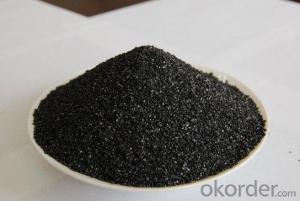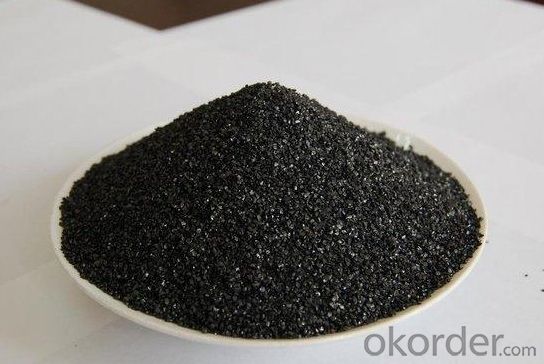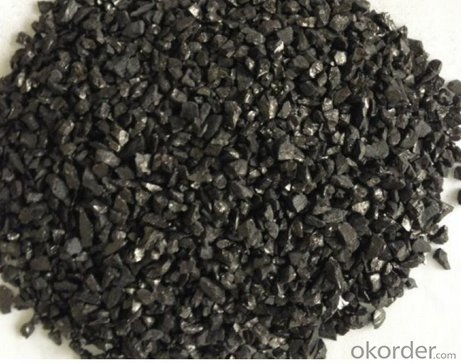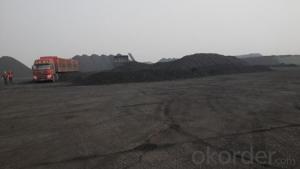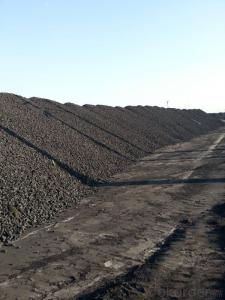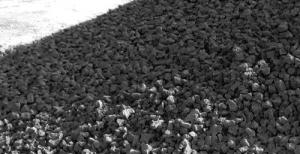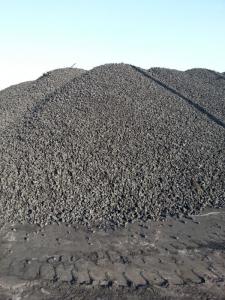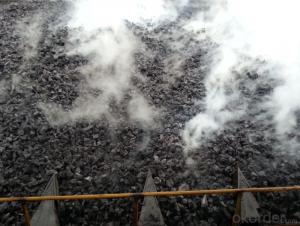Met coke 10-25mm from Coking coal CN;SHN
- Loading Port:
- Tianjin
- Payment Terms:
- TT OR LC
- Min Order Qty:
- 1000 m.t.
- Supply Capability:
- 20000 m.t./month
OKorder Service Pledge
OKorder Financial Service
You Might Also Like
1.Structure of Anthracite Description
Anthracite is made from Shanxi,the coal capital of the word .The quality is very high due to its unique resource .It has been exported to most of the world ,especially to Japan and Korea,as well as mid east.
It is commonly used in drinking water ,food industry ,chemical /dyeing industry ,sea/salt water filtration ,petro-chemical industry ,pulp/paper industry ,sauna,spa,pool,boiler ,etc.
Advantages:
1. Longer Filter Runs2. Faster Filtration3. Long Lifetime4. Good Separation Characteristics5. Savings water and power in washing6.Removes more iron and manganese salts tration ,petrochemical industry ,pulp /paper industry ,sauna,spa,pool,boiler,etc.
2. Main Features of Anthracite
Fixed Carbon: 78 %
Ash: 18 %
Volatile Matter: 4 %
Sulphur: 1.0 %
Moisture: 11 %
Gross Calorific Value: 6450 Kcal
Size: 0 mm - 19 mm: 90%
3. The Images of Anthracite
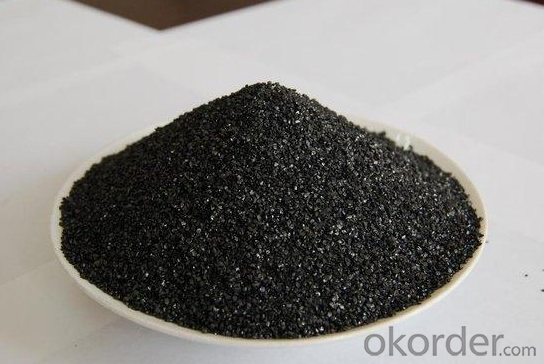
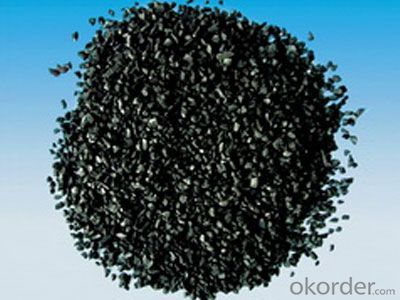
4. The Specification of Anthracite
1. Fixed carbon: 90%min
2.Uniform particles
3.Good separation characteristics
4. Long life
5. Widely used
6.activated anthracite:
7.Certificate: ISO9001, ISO9002, NSF
8.Usage: for water and air purification, etc.
5.FAQ of Anthracite
1). Q: Are you a factory or trading company?
A: We are a factory.
2). Q: Where is your factory located? How can I visit there?
A: Our factory is located in ShanXi, HeNan, China. You are warmly welcomed to visit us!
3). Q: How can I get some samples?
A: Please connect me for samples
4). Q: Can the price be cheaper?
A: Of course, you will be offered a good discount for big amount.
- Q: What are carbon credits and how do they work?
- Carbon credits are a market-based approach to reducing greenhouse gas emissions. They work by assigning a value to the reduction or removal of one metric ton of carbon dioxide or its equivalent (CO2e) from the atmosphere. These credits represent the right to emit a specific amount of greenhouse gases and can be traded or sold on the carbon market. The concept behind carbon credits is to provide an incentive for companies, organizations, or individuals to reduce their emissions. By setting a price for carbon emissions, it encourages businesses to invest in cleaner technologies and practices to offset their carbon footprint. This leads to a reduction in overall greenhouse gas emissions, contributing to the global effort to combat climate change. To obtain carbon credits, organizations undertake projects that reduce or remove greenhouse gas emissions. These projects can include renewable energy installations, energy efficiency improvements, afforestation (planting trees), or investing in clean development mechanisms in developing countries. Each project is assessed and verified by an independent third party to ensure its legitimacy and the actual reduction in emissions. Once a project is approved and verified, it is assigned a specific number of carbon credits based on the amount of emissions it has reduced or removed. These credits can then be sold on the carbon market to companies or individuals looking to offset their own emissions. The buyers can use these credits to compensate for their own emissions, effectively canceling out their carbon footprint. The carbon market provides a mechanism for the buying and selling of carbon credits, allowing for a flexible and efficient way to address climate change. The price of carbon credits can vary depending on supply and demand dynamics, as well as the stringency of emission reduction targets set by governments or global agreements. Overall, carbon credits play a vital role in incentivizing emission reduction activities and promoting sustainable practices. They provide a financial mechanism for businesses to invest in cleaner technologies while contributing to the global effort to mitigate climate change.
- Q: How is carbon used in the production of diamonds?
- Carbon is used in the production of diamonds through a process called high-pressure high-temperature (HPHT) synthesis. In this method, pure carbon is subjected to extremely high pressures and temperatures, replicating the conditions found deep within the Earth's mantle where natural diamonds form. By applying these conditions, carbon atoms rearrange and bond together, resulting in the formation of synthetic diamonds.
- Q: We need to make a poster... Of the 27 essential elements of the human body, I am in charge of carbon! I haven't found it for a long time! Who can help me? Urgent!!!!!!Can you find something very specific? Thank you
- The three to four billion years of life symphony, whose theme is the evolution of carbon chemistry.
- Q: How are carbon compounds classified?
- Carbon compounds are classified based on the type and number of atoms bonded to carbon atoms. There are several categories of carbon compounds that include hydrocarbons, alcohols, aldehydes, ketones, carboxylic acids, esters, ethers, amines, amides, and many more. Hydrocarbons are carbon compounds that only contain carbon and hydrogen atoms. They can be further divided into two main categories: aliphatic hydrocarbons and aromatic hydrocarbons. Aliphatic hydrocarbons include alkanes, alkenes, and alkynes, which are classified based on the type of carbon-carbon bonds they have. Aromatic hydrocarbons, on the other hand, contain a ring structure and are known for their aromaticity. Alcohols are carbon compounds that contain a hydroxyl (-OH) group attached to a carbon atom. They are classified based on the number of hydroxyl groups attached to the carbon atom. For example, methanol is a monohydroxy alcohol, while ethylene glycol is a dihydroxy alcohol. Aldehydes and ketones are carbon compounds that contain a carbonyl group (C=O). Aldehydes have the carbonyl group attached to a terminal carbon atom, while ketones have it attached to an internal carbon atom. They are named based on the number and position of the carbonyl group in the molecule. Carboxylic acids are carbon compounds that contain a carboxyl group (-COOH). They are named by replacing the -e ending of the corresponding hydrocarbon with -oic acid. For example, methane becomes methanoic acid. Esters are carbon compounds that are derived from the reaction between a carboxylic acid and an alcohol. They have the general formula RCOOR’, where R and R’ can be any alkyl or aryl group. They are often named based on the alcohol and acid used to form them. Ethers are carbon compounds that have an oxygen atom bonded to two alkyl or aryl groups. They are named by listing the alkyl or aryl groups in alphabetical order followed by the word ether. Amines are carbon compounds that contain a nitrogen atom bonded to one or more alkyl or aryl groups. They are named by adding the suffix -amine to the name of the alkyl or aryl group attached to nitrogen. Amides are carbon compounds that contain a carbonyl group (C=O) bonded to a nitrogen atom. They are named by replacing -oic acid or -ic acid ending of the corresponding carboxylic acid with -amide. Overall, the classification of carbon compounds is based on their functional groups and the arrangement of atoms around the carbon atom. These classifications help to categorize and study the diverse range of carbon compounds found in nature and synthesized in the laboratory.
- Q: What is a carbon free martensite?
- Thus, I think the non carbon martensite should refer to the martensite formed by ferrous alloy (non carbon), but the carbon in the iron is difficult to be completely removed
- Q: How much is a ton of carbon fiber? How much difference is made between domestic and imported?
- Industrial grade carbon fiber, ranging in price from 160 thousand to 290 thousand.
- Q: Now the furnace rock carbon early deleted, more than +10, he wants advanced I can't do ah
- Higher carbon is a little more likely than colorless reinforcement. Kylie, there are 2 kinds of reinforcement. The strengthening above requires only a colorless color
- Q: How does carbon impact the fertility of soil?
- Soil fertility relies heavily on carbon, which serves as the foundation for organic matter. Organic matter, derived from decaying plant and animal residues, enhances the soil's structure, nutrient-holding capacity, and water retention. This results in improved support for plant growth and microbial activity. Not only does organic matter supply carbon, but it also provides nutrients to plants through the process of decomposition. Microorganisms, fungi, and bacteria decompose organic matter and release nutrients like nitrogen, phosphorus, and potassium into the soil. These nutrients become available for plants to absorb. Additionally, carbon in organic matter binds soil particles, preventing erosion and improving soil structure. Furthermore, carbon plays a crucial role in water management for plants. It acts as a sponge, absorbing and retaining moisture, which helps sustain plant growth during dry periods. Carbon also fosters the growth of a diverse and healthy microbial community in the soil, including beneficial bacteria and fungi. These microorganisms contribute to nutrient cycling, disease suppression, and plant nutrient uptake, further enhancing soil fertility. However, it is important to avoid excessive carbon inputs or improper land management practices, as they can negatively affect soil fertility. An imbalance in carbon availability can lead to nitrogen immobilization, where microorganisms consume nitrogen for their own growth, depriving plants of this essential nutrient. Additionally, high carbon content can create anaerobic conditions, limiting oxygen availability for plant roots and beneficial soil organisms. To ensure optimal soil fertility, it is crucial to maintain a balanced carbon-to-nitrogen ratio and adopt sustainable land management practices. Carbon is an indispensable component for maintaining soil health by improving structure, nutrient availability, water retention, and microbial activity.
- Q: What is carbon nanophotonics?
- Carbon nanophotonics is a field of study that focuses on the manipulation and control of light using carbon-based materials at the nanoscale level. It involves the development and exploration of carbon-based nanomaterials, such as carbon nanotubes and graphene, to design and fabricate devices that can interact with light in unique and advantageous ways for various applications in photonics and optoelectronics.
- Q: How is carbon used in water filtration systems?
- Carbon is commonly used in water filtration systems due to its impressive adsorption properties. Adsorption involves the molecules of a substance binding to the surface of another material, in this case, carbon. Activated carbon, which is carbon that has been specially processed to create a large surface area, is particularly effective in water filtration. When water passes through the filtration system, the carbon captures and retains a wide range of impurities, including organic compounds, chlorine, volatile organic compounds (VOCs), and certain heavy metals. This adsorption process helps to remove unpleasant odors and tastes from the water, making it more palatable. Carbon also plays a crucial role in removing potentially harmful contaminants such as pesticides, herbicides, and pharmaceutical residues. Additionally, carbon filtration systems can help reduce the risk of waterborne illnesses by removing bacteria, viruses, and parasites. Overall, carbon is an essential component of water filtration systems as it significantly improves the quality and safety of drinking water.
Send your message to us
Met coke 10-25mm from Coking coal CN;SHN
- Loading Port:
- Tianjin
- Payment Terms:
- TT OR LC
- Min Order Qty:
- 1000 m.t.
- Supply Capability:
- 20000 m.t./month
OKorder Service Pledge
OKorder Financial Service
Similar products
Hot products
Hot Searches
